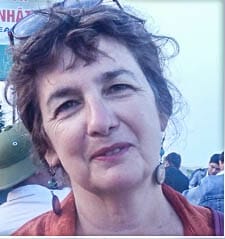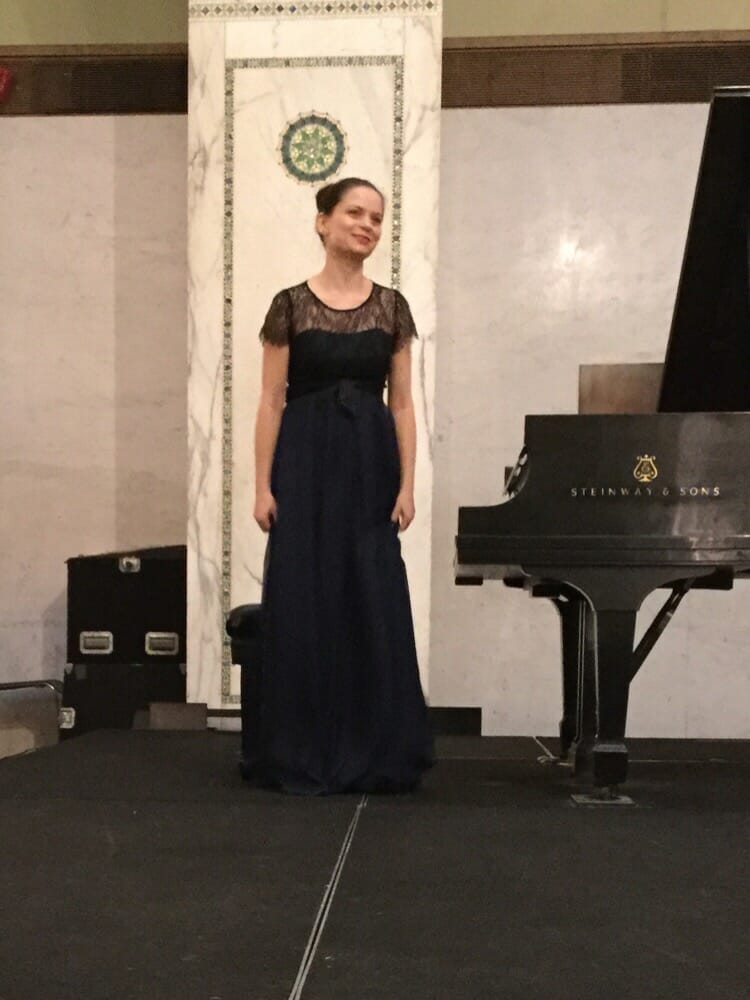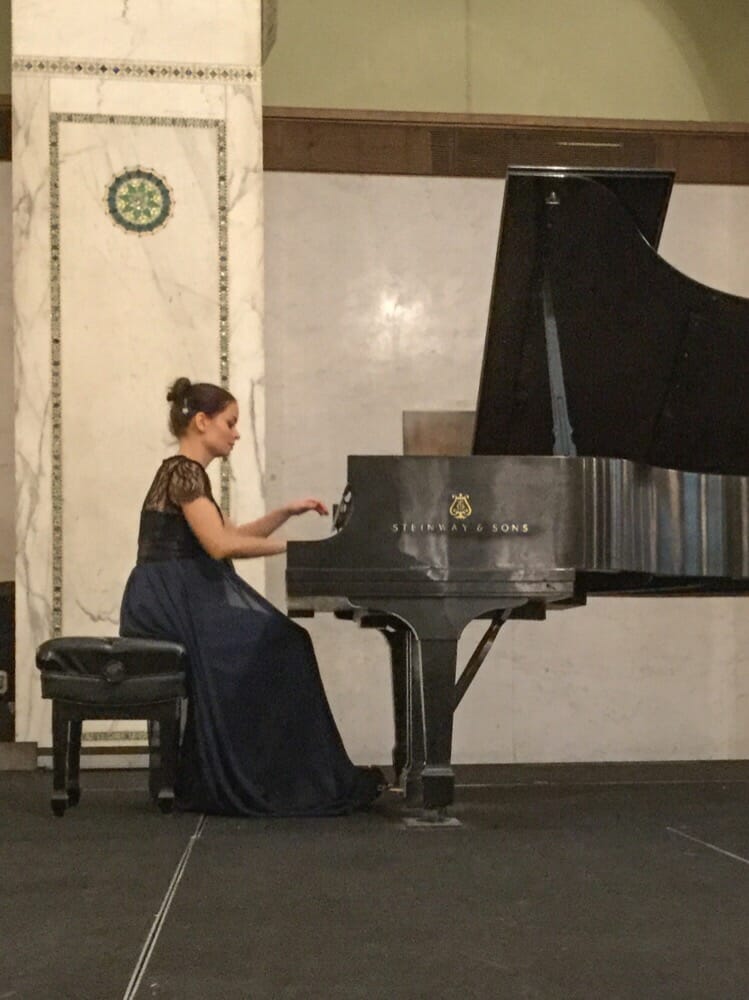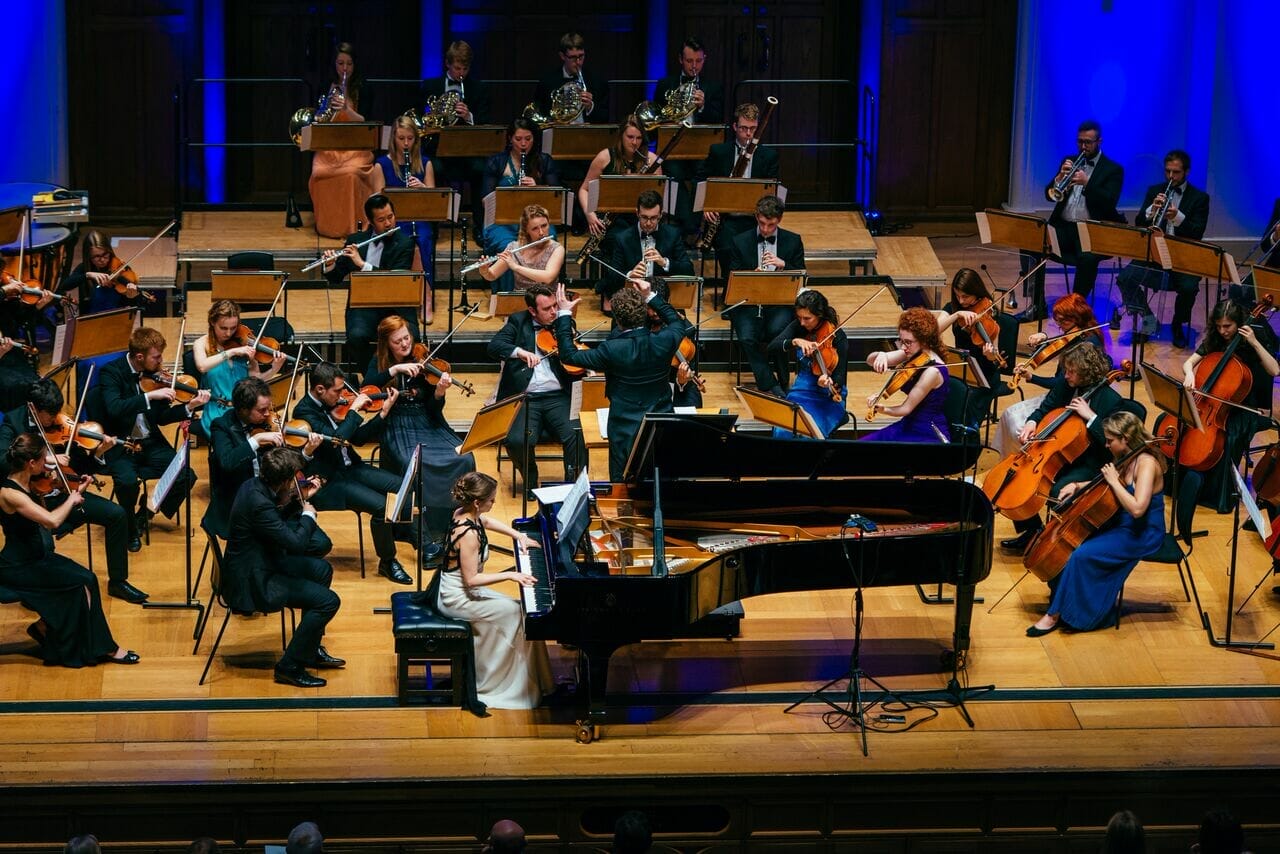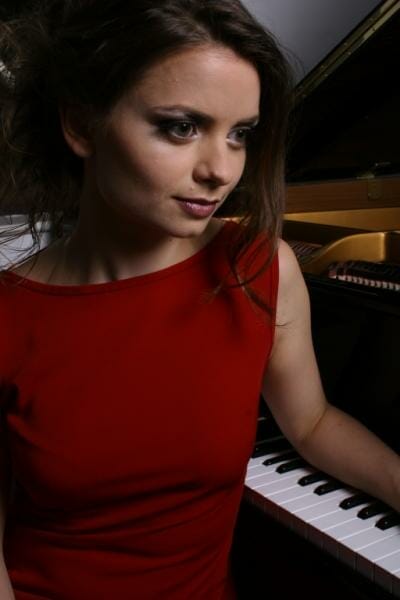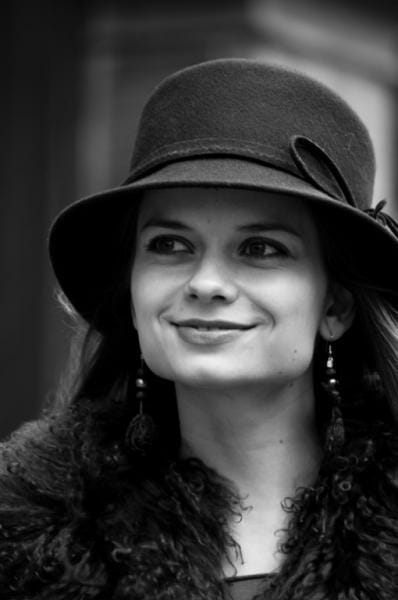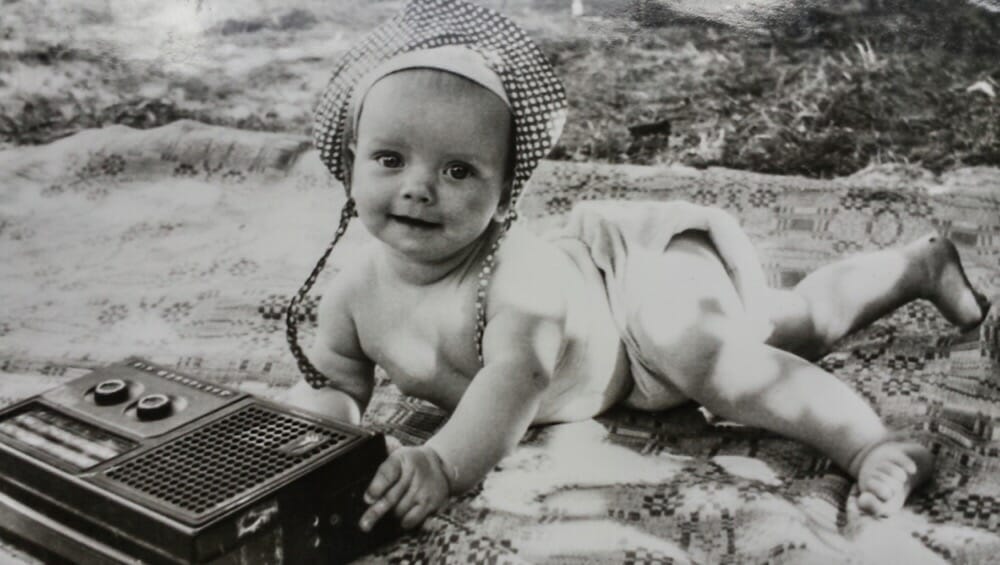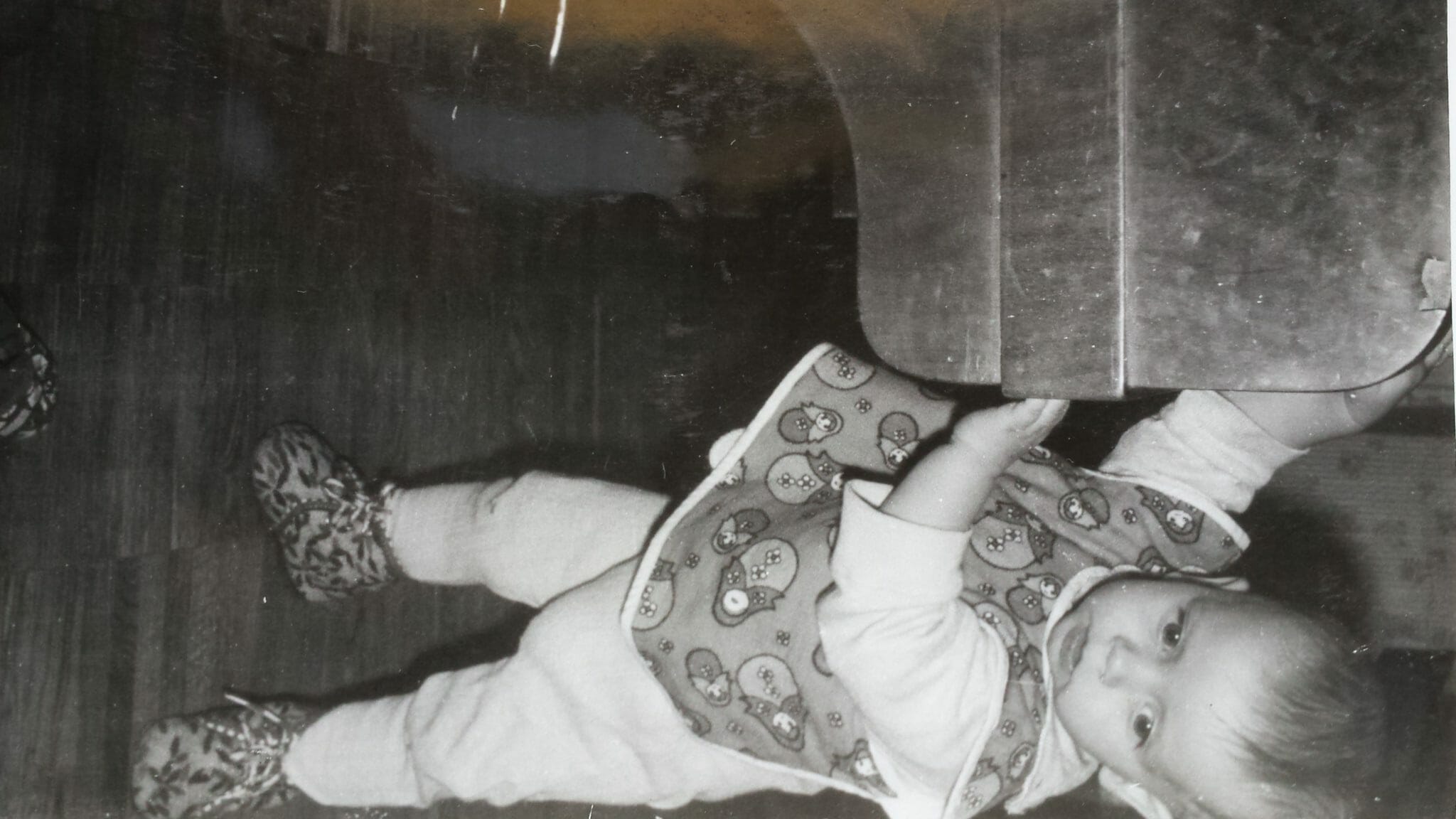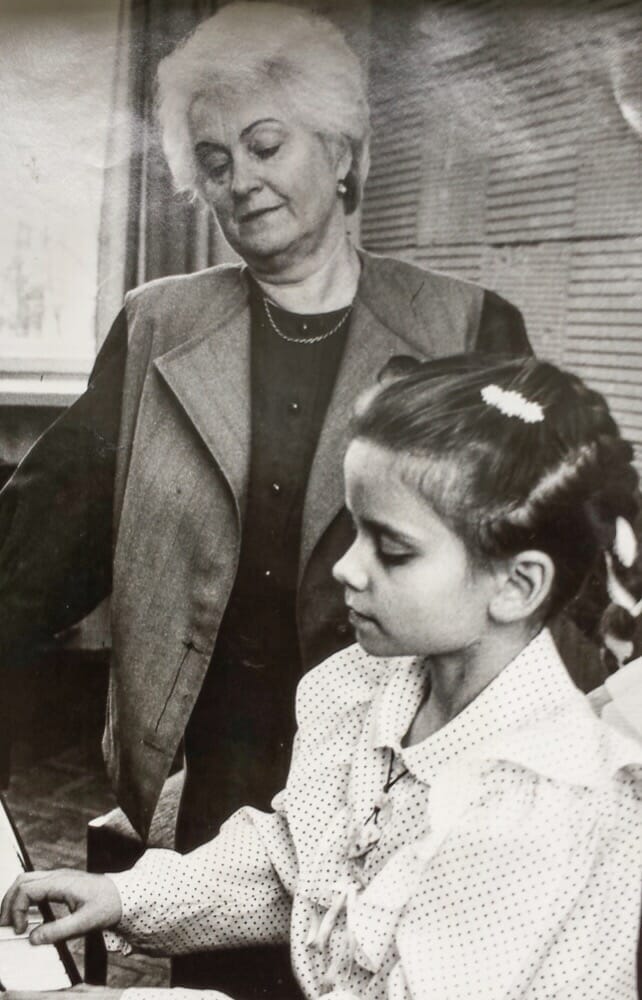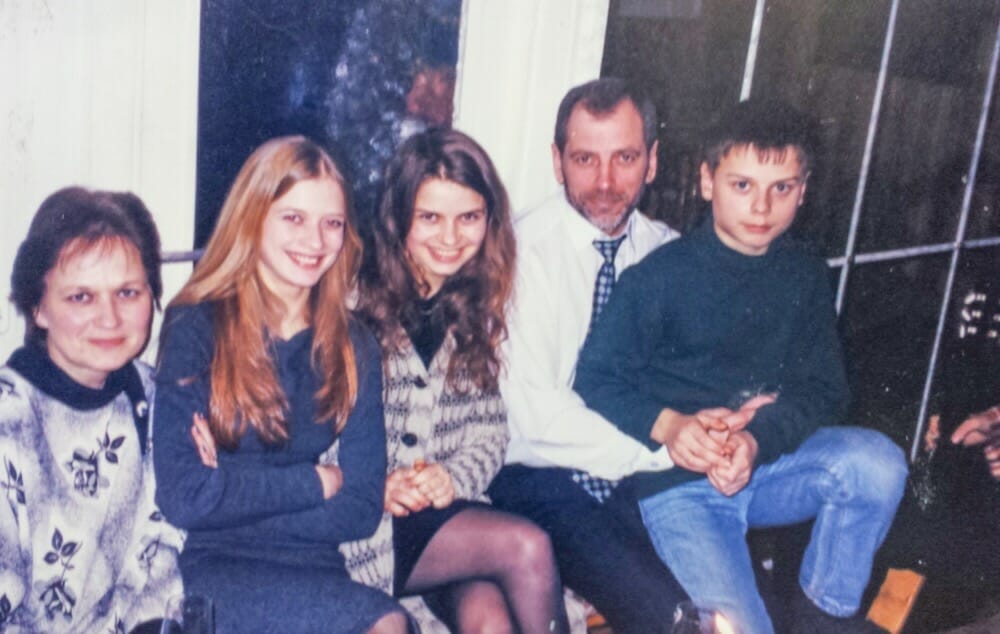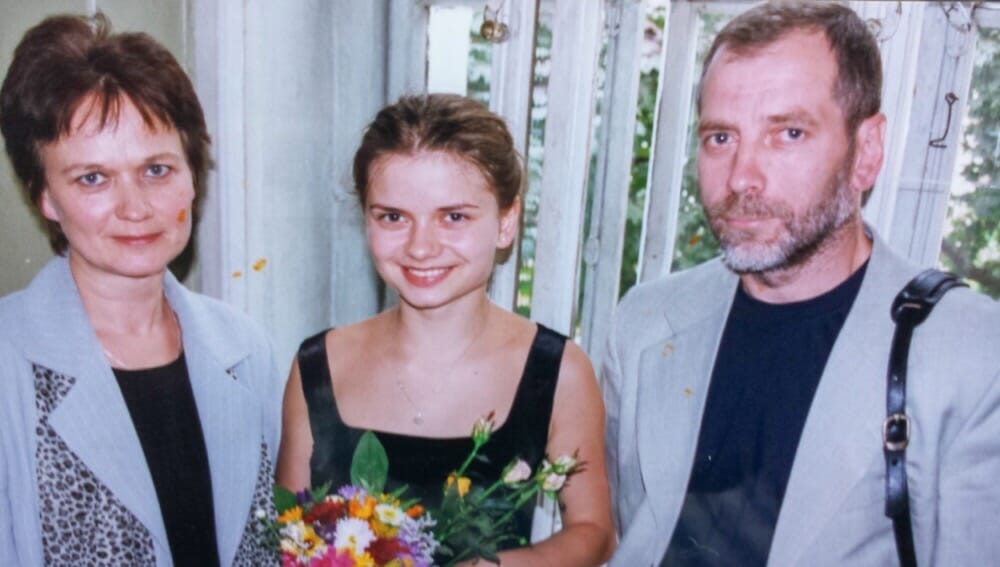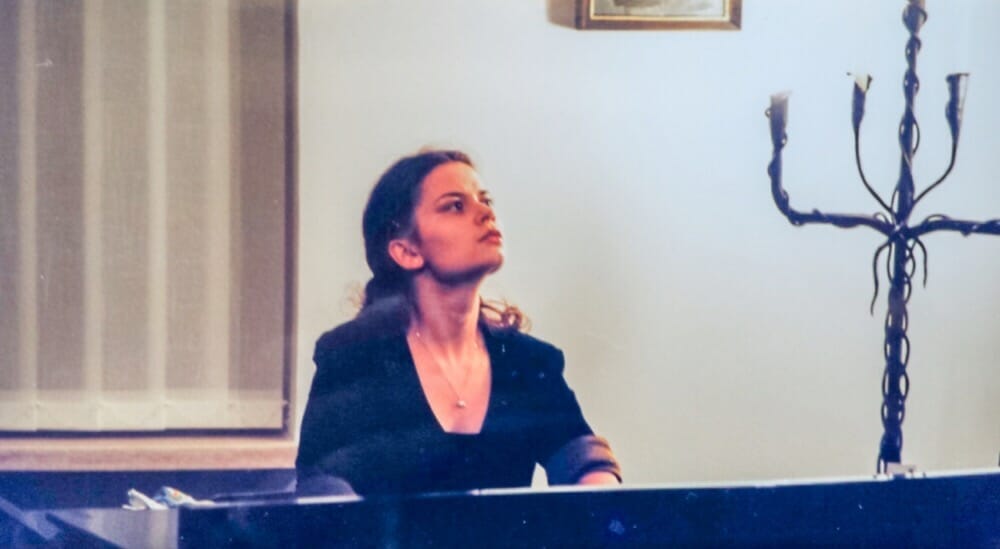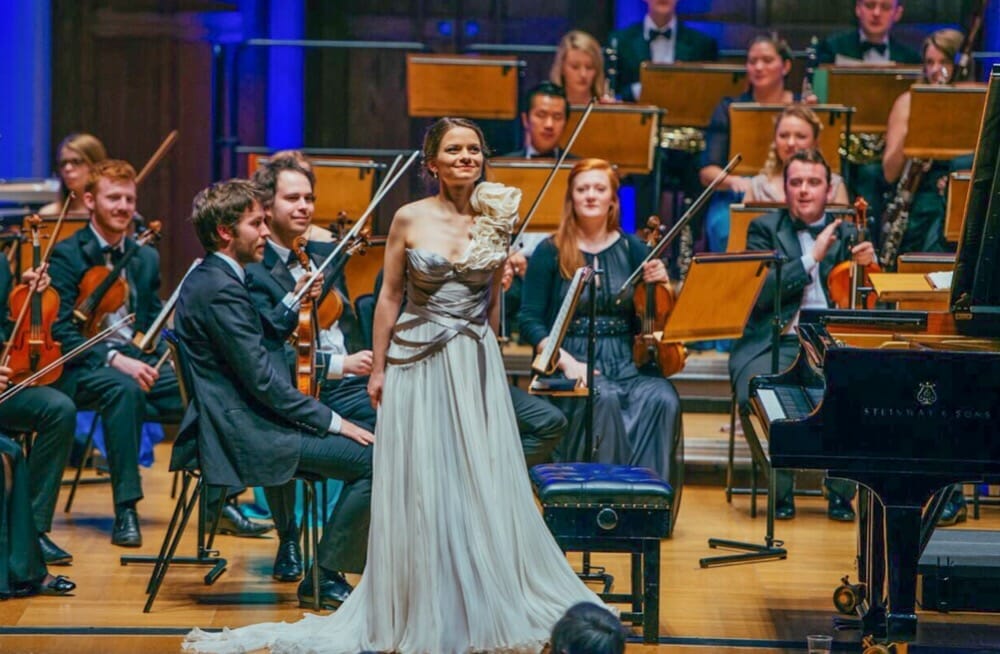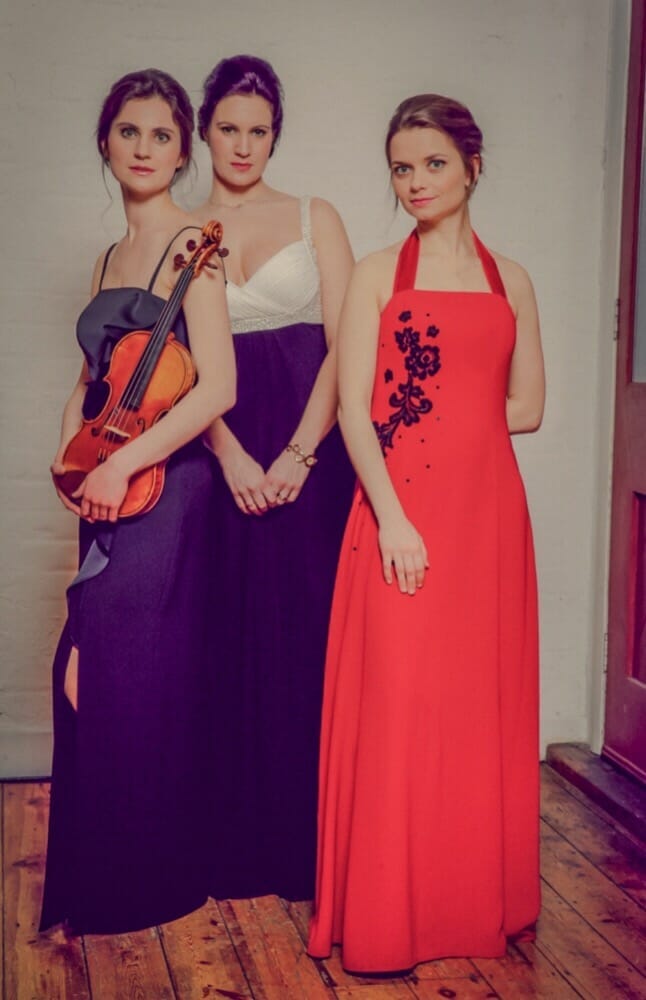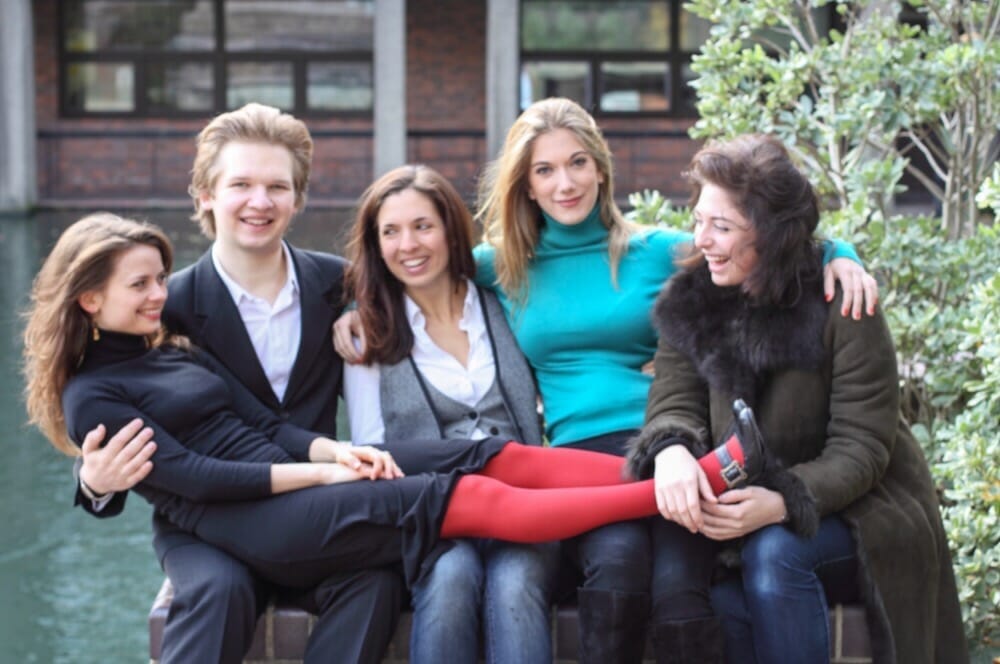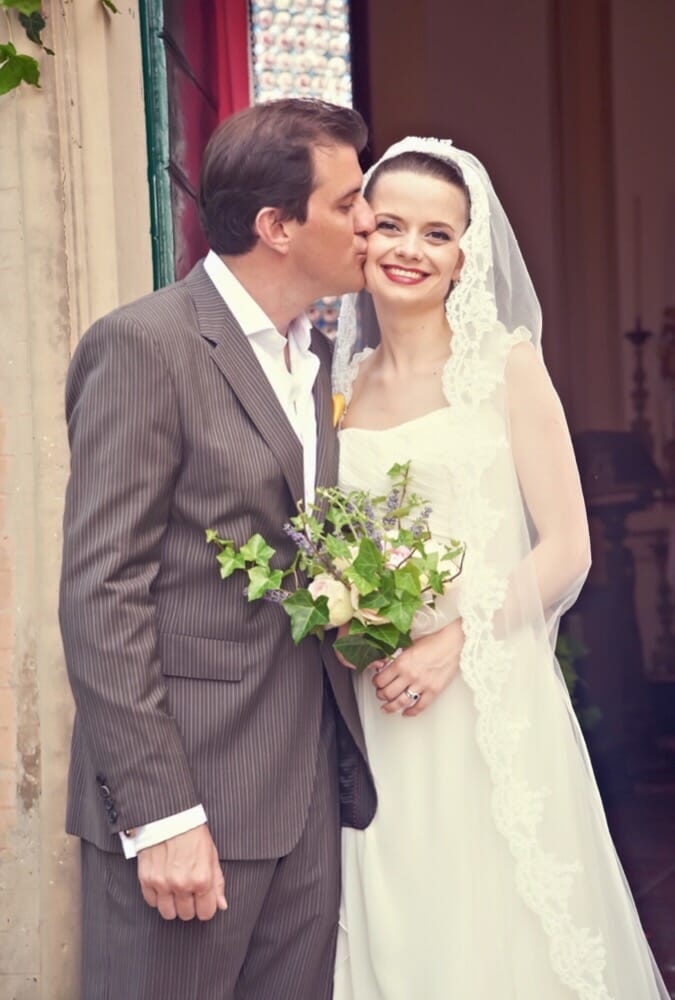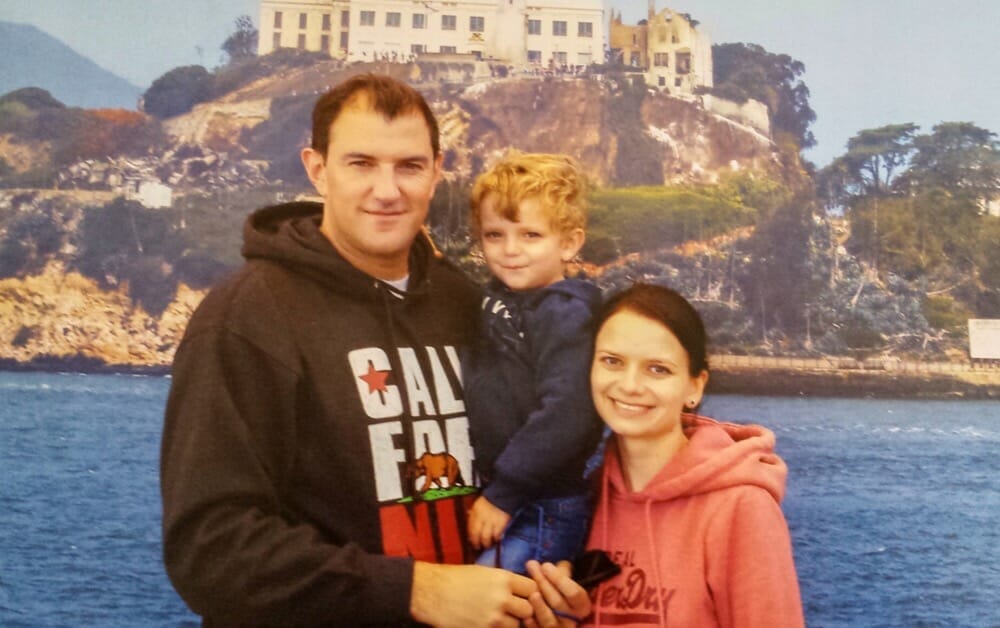On October 12, 2016, Lithuanian-born pianist Evelina Puzaite introduced Chicago audiences on WFMT and in the Chicago Cultual Center’s Preston Bradley Hall to little heard Baltic repertoire from Lithuanian artist and composer Mikalojus Čiurlionis (Prelude in F Major) and Latvian composite Pēteris Vasks (Balta Ainava, White Scenery), along with short pieces by Rachmaninoff (Prelude in G Major and Moment Musicaux No.4), Liszt (Selections from Trois etudes de concert), Ginastera (Danzas Argentinas) and Prokofiev (Toccata in D minor).
Evelina Puzaite’s Early Start at Piano
It’s difficult to precisely say when Evelina’s preparation for her performance began. The daughter of a pianist who always had a piano in her home, Evelina was captured in a photograph reaching for the piano’s keys when she could barely stand. She started music lessons with her mother when she was only four and began her official studies in music pre-school at the age of five.
Evelina’s mother, Irena, had been a concert pianist in her own right with several recordings of Mozart performances that her daughter describes with pride as “brilliant”. That was in a different Lithuania however, when the travel required to cultivate a larger audience was difficult. Her mother became a teacher and devoted mother to her three children. She is Evelina’s first fan, often overcome with emotion as she watches her pianist daughter take the stage to perform.
Theirs was and is an artistic family all around. Her father had studied literature, and when he wasn’t working as a journalist took up his pen to write stories, novellas, and books of essays. A music enthusiast but not a musician, Evelina credits his critiques and commentary with helping to teach her how to make a program most enjoyable from the listener’s perspective.
Her brother Vytautas had been a serious guitarist at one point, before he took up computers. Her sister Victoria was a ballet dancer for many years, which perhaps in part may be the inspiration for Evelina especially enjoying musical collaborations with dancers and other more visual art forms.
Drive for Artistic Expression
Evelina seems to have bottled both of her parents’ artistic inclinations into her person. In addition to piano, she likes to write and has published stories in Lithuanian that were later translated into English. She also likes photography and to paint, and explains, “I wouldn’t want to do anything like I’ve already done. Maybe I will write a childrens’ book next, a different genre. For me the great thing is to find different forms of expression..Sometimes I obsess with photography and sometimes painting, and at other times it’s writing.”
Choice of Repertoire
That drive for expression was on display during Puzaite’s Dame Myra Hess performance, both in her choice of repertoire and in how the seven pieces seemed to swirl about the room, mostly gently and melodically, like a string of sonnets.
How fitting that Evelina opened her poetic piano performance with a work by fellow Lithuanian Čiurlionis, who, like her, was both a visual artist and musician/composer. She comments, “This is not only one of my favorite prelude pieces, but I also especially like that he uses philosophical themes with beautiful colors, also in his paintings.”
How fitting too that someone like Evelina who has energies to express in words, images and music that she chose to end her program with a work by Prokofiev, Toccata in D minor, that is meant to stir visual imagery of a train. She comments, “It is difficult to play physically because it is fast and has to be played throughout at the same speed. It tells a story about what happens to the train and you imagine it visually as you listen. It really works; it is a great piece.”
Flow and Feeling
To both the ear and eye Puzaite’s performance seemed most of all to be about creating flow, rich in gentle moments. This feeling that it all just flowed from her fingers especially stood out because she had selected seven short works instead of the usual two or three of typical Dame Myra Hess performances. One suspects that the audience never realized the challenges to herself that she had put into her program. For example, she explains, “The three dances by Ginastera are very challenging rhythmically because you have to dance like different people at differen speeds, changing in a very short time…Every time I play this piece I want to dance but I have to keep playing, no matter how excited I get. It’s great entertainment, which is why I love it.”
You can download a recording of this performance from the WFMT podcasts collection here.
Click here to find more music video encores and profile stories of other Dame Myra Hess musicians.
Photos courtesy of Evelina Puzaite, unless otherwise indicated

